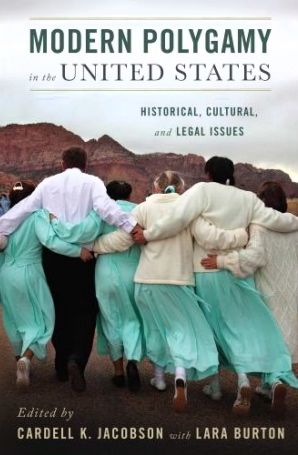
The book Modern Polygamy in the United States (Oxford University Press), edited by Cardell K. Jacobson with Lara Burton, is itself a product of the new scholarly attention that Mormon fundamentalism has attracted since the 2008 raid. The edited volume brings together a wide range of scholars to argue that the popular portrait of Mormon polygamy given by the media and law enforcement agencies ignores the diversity of these religious communities and polygamous lifestyles.
While polygamy is illegal in the U.S., law enforcement officials have often turned a blind eye toward the practice unless it involved abuse and underage marriage.The raid took place at a ranch run by the Fundamentalist Church of Jesus Christ of Latter Day Saints (FLDS), a breakaway sect of the Church of Jesus Christ of Latter Day Saints (LDS) formed in the early 20th century after the mainstream church disavowed polygamy. The Texas state authorities removed 400 children and 129 mothers from their homes. Anonymous charges of under-aged marriages and child abuse led to the raid, though the many of these allegations were not substantiated and the children have since been returned to their homes.
The contributors to the book argue that the distinctive lifestyle of the FLDS has led it into conflict with outsiders. Unlike mainstream Mormonism and other polygamous groups, the FLDS is based on the one-man leadership of a prophet who can arrange marriages and dictate other aspects of members’ lives. The leader of the FLDS, Warren Jeffs, has been accused of authoritarian leadership and abusing followers, and is facing various criminal charges. Under Jeff, FLDS members, who number approximately 8,000 and live in settlements in rural Arizona and Utah, dress in 19th century clothes and have increasingly avoided contact with non-members.
But after the raid, the church promised to discontinue its practice of encouraging-often under the orders of the “prophet”– plural marriages that include under-aged young women (below the age of 18). The bad publicity surrounding the raid also forced members, including women who are traditionally taught to submissive to men, to go on the defensive, holding media interviews, testifying in state capitals about the benefits of polygamy and even starting websites that explain their positions and practices to outsiders, according to contributors Heber Hammon and William Jankowiak.
Polygamy has also recently found a place in American culture through the popular television show Big Love, which portrays a polygamous family living a modern lifestyle. A new reality show series on a polygamous family, called Sister Wives, is premiering on U.S. television this week. The book’s contributors emphasize that there are increasingly diverse polygamous communities and movements in the American West and that they do not fit the stereotype of isolated and authoritarian “cultists.” A split has occurred in the FLDS with a more liberal group, known as “the Work” or Centennial Park (the community in Arizona where the members live), emerging that practices a more egalitarian form of leadership and allows women to dress in modern clothes and lead more independent lives.
The largest polygamous Mormon group is the Apostolic United Brethren (AUB), with 10,000 members, with leadership by a council of elders and a more open stance toward American society. In a chapter on other polygamous groups, anthropologist Janet Bennion notes the growth of independent polygamists who live outside of religious communities and adopt the “principle” of plural marriage in modern ways. All of these communities and families takes in convert women who value close camaraderie with “sister wives” and the lack of responsibilities of traditional mothers and wives so they lead fulfilling careers. Bennion even finds a group of evangelicals who run the Be Free Patriarchal Christian Church in Utah, which has about 1,000 members nationwide and seek to convert Mormon polygamists while approving of plural marriages.
Most of the contributors agree that it is not only the promise of romance and of greater sexual opportunities that drive phenomenon of polygamy for women or men. It is not even financial security that convince women to join polygamous arrangements, since fundamentalist Mormon communities have high rates of members claiming welfare assistance. Rather, it is the assurance of salvation that women find in being married to their spiritual leader-husband, even if they have to share him with other wives.
In another chapter, Carrie Miles argues that even if the mainstream LDS church reversed itself and approved of polygamy, there would be few Mormon women interested in such an arrangement. This is because the mainstream church has disavowed and discontinued teachings and practices which give polygamy its continuing spiritual value for fundamentalist Mormons. In particular, the fundamentalist Mormon teaching and practice of “celestial marriage,” where the husband is seen as providing the means of salvation for wives, makes polygamy much sought after by both men and women in these communities. This is especially the case in fundamentalist communities where certain men are considered prophets and God-appointed leaders; marriage into such elite families provide the greatest guarantee of salvation for women.
Miles concludes that “It is only when we consider celestial marriage as based on the uniquely distributed ability to save that we can begin to understand [polygamy]. And the desire for salvation-not admiration, flattering words, or sexual attraction-is what polygamist Mormons have said was their motive all along.”
Richard Cimino
Cardell Jacobson and Lara Burton (Eds.), Modern Polygamy in the United States: Historical, Cultural, and Legal Issues, New York: Oxford University Press, 2011, 384 p.